Themed collection Celebrating the 2017 RSC Prize and Award Winners

Defects and disorder in metal organic frameworks
The wide-ranging properties of metal organic frameworks (MOFs) rely in many cases on the presence of defects within their structures and the disorder that is inevitably associated with such defects.

Dalton Trans., 2016,45, 4113-4126
https://doi.org/10.1039/C5DT04392A
An element through the looking glass: exploring the Au–C, Au–H and Au–O energy landscape
Gold has seen a remarkable transformation from inert noble metal to highly reactive catalyst. However, its organometallic chemistry contains many unknowns. How certain can we be about the species involved in catalytic cycles? This Perspective summarises recent discoveries.

Dalton Trans., 2015,44, 20785-20807
https://doi.org/10.1039/C5DT03930D
Towards sustainable fuels and chemicals through the electrochemical reduction of CO2: lessons from water electrolysis
This Perspective discusses target parameters for the electroreduction of CO2, based on its comparison with water splitting, which is to become a practical alternative for energy storage into fuels and chemicals.
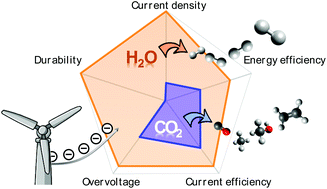
Green Chem., 2015,17, 5114-5130
https://doi.org/10.1039/C5GC01893E
Self-assembly of “patchy” nanoparticles: a versatile approach to functional hierarchical materials
The solution-phase self-assembly or “polymerization” of discrete colloidal building blocks, such as “patchy” nanoparticles and multicompartment micelles, is attracting growing attention with respect to the creation of complex hierarchical materials.
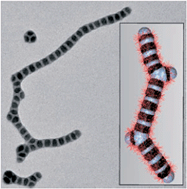
Chem. Sci., 2015,6, 3663-3673
https://doi.org/10.1039/C5SC01141H
Stereospecific functionalizations and transformations of secondary and tertiary boronic esters
This feature article discusses the range of stereospecific transformations available to enantioenriched boronic esters, and their applications in synthesis.
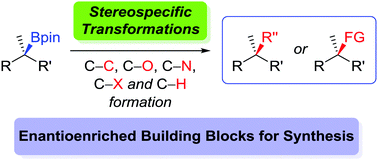
Chem. Commun., 2017,53, 5481-5494
https://doi.org/10.1039/C7CC01254C
Magnesium, zinc, aluminium and gallium hydride complexes of the transition metals
Here we survey and organise the state-of-the-art understanding of the TM–H–M linkage (M = Mg, Zn, Al, Ga). We discuss the structure and bonding in these complexes, their known reactivity, and their largely unrealised potential in catalysis.
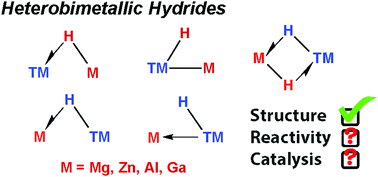
Chem. Commun., 2017,53, 1348-1365
https://doi.org/10.1039/C6CC05702K
Rational control of nano-scale metal-catalysts for biomass conversion
This feature article discusses the rational control of nano-scale metal catalysts for catalytic biomass transformation.
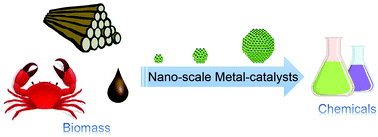
Chem. Commun., 2016,52, 6210-6224
https://doi.org/10.1039/C6CC00336B
Pyridynes and indolynes as building blocks for functionalized heterocycles and natural products
This feature article showcases the use of pyridynes and indolynes to construct functionalized heterocycles and complex natural products.
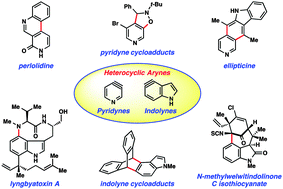
Chem. Commun., 2015,51, 34-45
https://doi.org/10.1039/C4CC06445C
Antibiotics from Gram-negative bacteria: a comprehensive overview and selected biosynthetic highlights
Gram-negative bacteria are a rich and underexplored source of antibiotics that are assembled via remarkably diverse biosynthetic pathways.
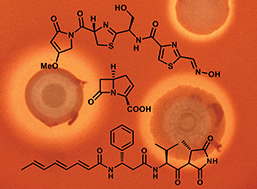
Nat. Prod. Rep., 2017,34, 712-783
https://doi.org/10.1039/C7NP00010C
Artificial molecular motors
Artificial molecular motors take inspiration from motor proteins, nature's solution for achieving directional molecular level motion. An overview is given of the principal designs of artificial molecular motors and their modes of operation. We identify some key challenges remaining in the field.
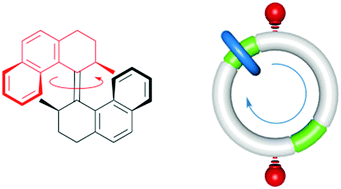
Chem. Soc. Rev., 2017,46, 2592-2621
https://doi.org/10.1039/C7CS00245A
Synthesis of biaryls using aryne intermediates
The synthesis of biaryls from benzyne intermediates offers an alternative strategy to conventional metal-catalyzed cross-coupling approaches.
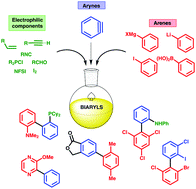
Chem. Soc. Rev., 2016,45, 6766-6798
https://doi.org/10.1039/C6CS00220J
Polyferrocenylsilanes: synthesis, properties, and applications
This comprehensive review covers polyferrocenylsilanes (PFSs), a well-established, readily accessible class of main chain organosilicon metallopolymer. The focus is on the recent advances involving PFS homopolymers and block copolymers and the article covers the synthesis, properties, and applications of these fascinating materials.
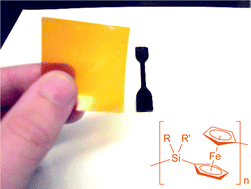
Chem. Soc. Rev., 2016,45, 5358-5407
https://doi.org/10.1039/C6CS00155F
Ultrafast and nonlinear surface-enhanced Raman spectroscopy
This review discusses the origins, latest advances, challenges, and future directions of the emerging field of ultrafast surface-enhanced Raman spectroscopy.
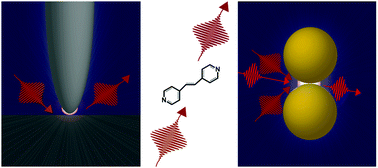
Chem. Soc. Rev., 2016,45, 2263-2290
https://doi.org/10.1039/C5CS00763A
Developing and understanding biofluid vibrational spectroscopy: a critical review
Biofluid vibrational spectroscopy, a promising tool for rapid disease diagnosis.
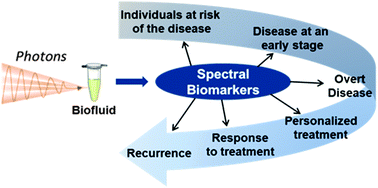
Chem. Soc. Rev., 2016,45, 1803-1818
https://doi.org/10.1039/C5CS00585J
Complicity of haem in some adverse drug-reactions
Genetic variants in haem metabolism enzymes can be predisposition factors for adverse reactions in some individuals. New areas of haem biology may also be associated with idiosyncratic effects which are yet to be identified.
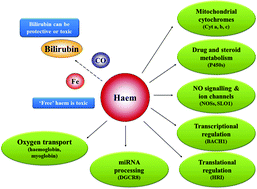
Toxicol. Res., 2015,4, 1128-1142
https://doi.org/10.1039/C5TX00011D
Artificial switchable catalysts
This review describes progress in the field of artificial switchable catalysts, where the rate acceleration, stereochemistry and/or chemoselectivity of catalysed processes can be switched through external stimuli.
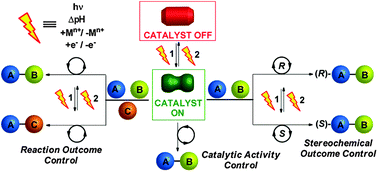
Chem. Soc. Rev., 2015,44, 5341-5370
https://doi.org/10.1039/C5CS00096C
Wavelength-selective cleavage of photoprotecting groups: strategies and applications in dynamic systems
Wavelength-selective deprotection is an attractive method to control multiple functions in one system using light.

Chem. Soc. Rev., 2015,44, 3358-3377
https://doi.org/10.1039/C5CS00118H
Can mid-infrared biomedical spectroscopy of cells, fluids and tissue aid improvements in cancer survival? A patient paradigm
This review takes a fresh approach from the patient perspective; offering insight into the applications of midinfrared biomedical spectroscopy.
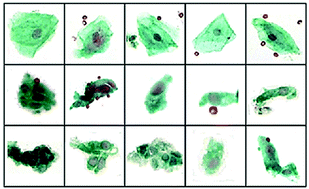
Analyst, 2016,141, 467-475
https://doi.org/10.1039/C5AN01858G
Is food allergen analysis flawed? Health and supply chain risks and a proposed framework to address urgent analytical needs
Food allergy is an increasing problem. If we fail to realise the promise of current risk assessment and risk management of food allergens through lack of ability to measure them reproducibly and with traceability to an international unit of measurement, the analytical community will have failed a significant societal challenge.
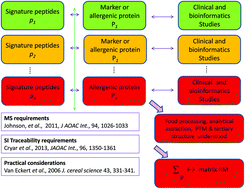
Analyst, 2016,141, 24-35
https://doi.org/10.1039/C5AN01457C
Point-and-shoot: rapid quantitative detection methods for on-site food fraud analysis – moving out of the laboratory and into the food supply chain
Major food adulteration and contamination events occur with alarming regularity and are known to be episodic, with the question being not if but when another large-scale food safety/integrity incident will occur.
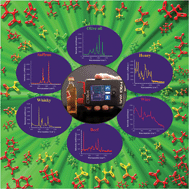
Anal. Methods, 2015,7, 9401-9414
https://doi.org/10.1039/C5AY02048D
C–H functionalization logic in total synthesis
The strategic and economic benefits of C–H functionalization logic are analyzed through the critical lens of total synthesis.

Chem. Soc. Rev., 2011,40, 1976-1991
https://doi.org/10.1039/C0CS00182A
Regioselective magnesiation of N-heterocyclic molecules: securing insecure cyclic anions by a β-diketiminate-magnesium clamp
Surpassing traditional organolithium bases, regioselective magnesiation of N-heterocyclic molecules is accomplished using a Mg base with a β-diketiminate steric stabilizer.

Chem. Commun., 2017,53, 3653-3656
https://doi.org/10.1039/C6CC09675A
Simulated photoelectron intensities at the aqueous solution–air interface for flat and cylindrical (microjet) geometries
The average emission angle and information depth of a photoelectron spectroscopy experiment that employs a liquid microjet is determined using SESSA and the predicted photoelectron intensities are compared with those from a flat aqueous interface.
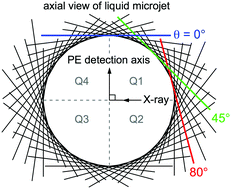
Phys. Chem. Chem. Phys., 2017,19, 6330-6333
https://doi.org/10.1039/C6CP07539H
Isolation of an unusual [Cu6] nanocluster through sequential addition of copper(I) to a polynucleating ligand
Addition of 2 equiv. of CuI to a [Cu]4 multimetallic complex results in cluster formation leading to the isolation of a rare bicapped tetrahedral [Cu6I2] cluster that is stabilised by two conformationally constrained polynucleating ligands.
![Graphical abstract: Isolation of an unusual [Cu6] nanocluster through sequential addition of copper(i) to a polynucleating ligand](/en/Image/Get?imageInfo.ImageType=GA&imageInfo.ImageIdentifier.ManuscriptID=C6DT04703C&imageInfo.ImageIdentifier.Year=2017)
Dalton Trans., 2017,46, 2077-2080
https://doi.org/10.1039/C6DT04703C
Biocatalytic transamination with near-stoichiometric inexpensive amine donors mediated by bifunctional mono- and di-amine transaminases
Bifunctional transaminases enable a strategy for the production of chiral amines using small excesses of diamine donors.
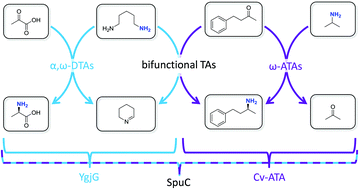
Green Chem., 2017,19, 361-366
https://doi.org/10.1039/C6GC02102F
Photoinduced energy- and electron-transfer from a photoactive coordination cage to bound guests
The array of naphthyl chromophores in a self-assembled cage can effect photoinduced energy- or electron-transfer to guests in the central cavity.

Chem. Commun., 2017,53, 408-411
https://doi.org/10.1039/C6CC09298E
2′-(R)-Fluorinated mC, hmC, fC and caC triphosphates are substrates for DNA polymerases and TET-enzymes
A deeper investigation of the chemistry that occurs on the newly discovered epigenetic DNA bases 5-hydroxymethyl-(hmdC), 5-formyl-(fdC), and 5-carboxy-deoxycytidine (cadC) requires chemical tool compounds, which are able to dissect the different potential reaction pathways in cells.
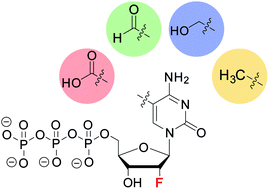
Chem. Commun., 2016,52, 14361-14364
https://doi.org/10.1039/C6CC07517G
Light-driven electron injection from a biotinylated triarylamine donor to [Ru(diimine)3]2+-labeled streptavidin
A dyad of covalently anchored [Ru(diimine)3]2+ and a biotinylated triarylamine for the photogeneration of a charge-separated species within streptavidin.
![Graphical abstract: Light-driven electron injection from a biotinylated triarylamine donor to [Ru(diimine)3]2+-labeled streptavidin](/en/Image/Get?imageInfo.ImageType=GA&imageInfo.ImageIdentifier.ManuscriptID=C6OB01273F&imageInfo.ImageIdentifier.Year=2016)
Org. Biomol. Chem., 2016,14, 7197-7201
https://doi.org/10.1039/C6OB01273F
Immobilization of an artificial imine reductase within silica nanoparticles improves its performance
Immobilization and protection of artificial imine reductase in silica nanoparticles increases its activity and protects from various denaturing stresses.

Chem. Commun., 2016,52, 9462-9465
https://doi.org/10.1039/C6CC04604E
Intensified biocatalytic production of enantiomerically pure halophenylalanines from acrylic acids using ammonium carbamate as the ammonia source
An industrial-scale method employing a phenylalanine ammonia lyase enzyme.

Catal. Sci. Technol., 2016,6, 4086-4089
https://doi.org/10.1039/C6CY00855K
Intramolecular transport of small-molecule cargo in a nanoscale device operated by light
A light-operated molecular nanodevice is able to transport an acetyl cargo intramolecularly over a distance of about 2 nm.

Chem. Commun., 2016,52, 6765-6768
https://doi.org/10.1039/C6CC02382G
Highly photoluminescent copper carbene complexes based on prompt rather than delayed fluorescence
Simple carbene complexes of copper halides give photoluminescence quantum yields of up to 96%, with sub-nanosecond emission lifetimes.
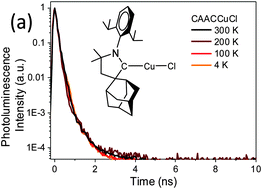
Chem. Commun., 2016,52, 6379-6382
https://doi.org/10.1039/C6CC02349E
Insights into metal–ligand hydrogen transfer: a square-planar ruthenate complex supported by a tetradentate amino–amido-diolefin ligand
A unique square planar anionic ruthenium(0) complex with amido and amine donors undergoes rapid NH oxidative addition/elimination reactions.
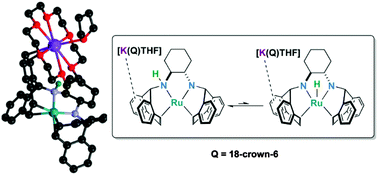
Chem. Commun., 2016,52, 6138-6141
https://doi.org/10.1039/C6CC00041J
A water-soluble metal–organic complex array as a multinuclear heterometallic peptide amphiphile that shows unconventional anion dependency in its self-assembly
Water-soluble metal–organic complex array 1, bearing Ru(II), Pt(II) and Rh(III) complexes at the side residues of the short peptide, exhibits anion and pH-responsive self-assembling behaviours in aqueous media.
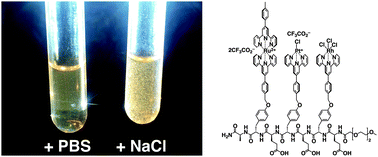
Chem. Commun., 2016,52, 1579-1581
https://doi.org/10.1039/C5CC08973E
Amorphous metal–organic frameworks for drug delivery
We show controlled release over a 30 day period compared with the release from crystalline MOF, which occurs in less than 2 days.
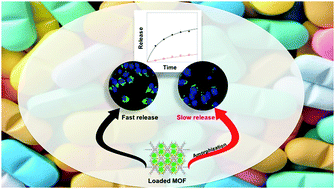
Chem. Commun., 2015,51, 13878-13881
https://doi.org/10.1039/C5CC05237H
Generation of a pair of independently binding DNA aptamers in a single round of selection using proximity ligation
The ability to rapidly generate a pair of aptamers that bind independently to a protein target would greatly extend their use as reagents for two site (‘sandwich’) assays.

Chem. Commun., 2015,51, 9050-9053
https://doi.org/10.1039/C5CC02314A
Collagen labelling with an azide-proline chemical reporter in live cells
Biosynthetic incorporation of an azide-proline chemical reporter into collagen allows selective imaging in live foetal ovine osteoblasts using a strain-promoted [3+2] azide–alkyne cycloaddition reaction.
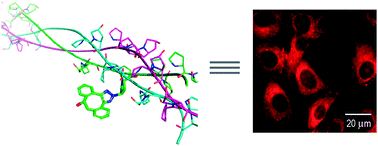
Chem. Commun., 2015,51, 5250-5252
https://doi.org/10.1039/C4CC07974D
Visible light promoted thiol-ene reactions using titanium dioxide
Thiol-ene chemistry under mild conditions is reported using titania as a cheap and user-friendly photoredox catalyst.

Chem. Commun., 2015,51, 4383-4385
https://doi.org/10.1039/C4CC09987G
Tertiary α-diarylmethylamines derived from diarylketimines and organomagnesium reagents
Organomagnesium reagents enable swift and versatile derivatisation of diarylimines to the corresponding α-substituted diarylmethylamines in excellent yields, through fast and clean reactions.

Chem. Commun., 2015,51, 703-706
https://doi.org/10.1039/C4CC06719C
Oxidative atomized spray deposition of electrically conductive poly(3,4-ethylenedioxythiophene)
Atomized spray deposition of 3,4-ethylenedioxythiophene monomer in the presence of triflic anhydride vapour yields electrically conducting poly(3,4-ethylenedioxythiophene) layers.

Chem. Commun., 2013,49, 7741-7743
https://doi.org/10.1039/C3CC41822G
Photoinduced electron transfer from rylenediimide radical anions and dianions to Re(bpy)(CO)3 using red and near-infrared light
Photoinduced electron transfer dynamics are described for a set of dyads comprising rylenediimide anion chromophores and a Re(bpy)(CO)3 metal center.
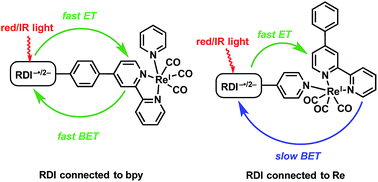
Chem. Sci., 2017,8, 3821-3831
https://doi.org/10.1039/C6SC05103K
Watasemycin biosynthesis in Streptomyces venezuelae: thiazoline C-methylation by a type B radical-SAM methylase homologue
A type B radical-SAM methylase homologue catalyses thiazoline C-methylation as the final step of watasemycin biosynthesis in Streptomyces venezuelae ATCC10712.
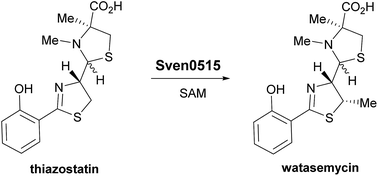
Chem. Sci., 2017,8, 2823-2831
https://doi.org/10.1039/C6SC03533G
Identification of monodentate oxazoline as a ligand for copper-promoted ortho-C–H hydroxylation and amination
The use of a weakly coordinating monodentate directing group for copper-mediated ortho-hydroxylation and amination reactions allows for the identification of an external oxazoline ligand as a promoter.

Chem. Sci., 2017,8, 1469-1473
https://doi.org/10.1039/C6SC03383K
Photodriven hydrogen evolution by molecular catalysts using Al2O3-protected perylene-3,4-dicarboximide on NiO electrodes
Photodriven charge transfer dynamics are described for an atomic layer deposition-stabilized, organic dye-sensitized photocathode architecture that produces hydrogen.
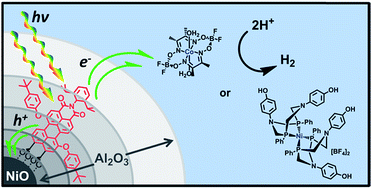
Chem. Sci., 2017,8, 541-549
https://doi.org/10.1039/C6SC02477G
Thioester reduction and aldehyde transamination are universal steps in actinobacterial polyketide alkaloid biosynthesis
Polyketide synthase reductive chain release and subsequent transamination are key steps in the biosynthesis of polyketide alkaloids in actinobacteria.
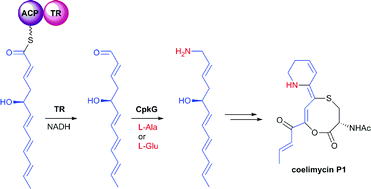
Chem. Sci., 2017,8, 411-415
https://doi.org/10.1039/C6SC02803A
Self-sorted photoconductive xerogels
Self-sorting between n-type and p-type gelators results in effective visible-active photoconductive xerogels.

Chem. Sci., 2016,7, 6499-6505
https://doi.org/10.1039/C6SC02644C
Stabilising the lowest energy charge-separated state in a {metal chromophore – fullerene} assembly: a tuneable panchromatic absorbing donor–acceptor triad
A novel fullerene-bipyridine-Pt-catecholate triad forms the lowest energy charge separated state upon photoexcitation, investigated by time-resolved infrared spectroscopy.
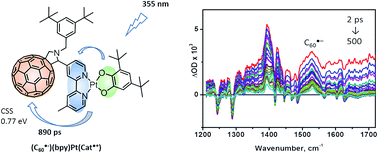
Chem. Sci., 2016,7, 5908-5921
https://doi.org/10.1039/C5SC04271B
Uranium(IV) terminal hydrosulfido and sulfido complexes: insights into the nature of the uranium–sulfur bond
We report the synthesis and characterization of terminal uranium(IV) hydrosulfido and sulfido complexes, supported by the hexadentate, tacn-based ligand (Ad,MeArO)3tacn3−.

Chem. Sci., 2016,7, 5857-5866
https://doi.org/10.1039/C6SC00677A
Interplay between surface chemistry and performance of rutile-type catalysts for halogen production
DFT, TAP, and operando PGAA studies demonstrate that the complex and dynamic surface chemistry of hydrogen halide oxidation on rutile-type catalysts determines the activity and stability patterns for halogen production.

Chem. Sci., 2016,7, 2996-3005
https://doi.org/10.1039/C5SC04247J
Zwitterionic and biradicaloid heteroatomic cyclopentane derivatives containing different group 15 elements
The formal cyclopentane-1,3-diyl derivatives [E1(μ-NTer)2({E2C} = NDmp)] (Ter = 2,6-dimesityl-phenyl, Dmp = 2,6-dimethylphenyl) were prepared by 1,1-insertion of CNDmp into the N–E2 bond of [E1(μ-NTer)2E2] (E1 = N, P; E2 = P, As).

Chem. Sci., 2016,7, 745-751
https://doi.org/10.1039/C5SC03515E
An enantioselective artificial Suzukiase based on the biotin–streptavidin technology
Introduction of a biotinylated monophosphine palladium complex within streptavidin affords an enantioselective artificial Suzukiase. Site-directed mutagenesis allowed the optimization of the activity and the enantioselectivity of this artificial metalloenzyme. A variety of atropisomeric biaryls were produced in good yields and up to 90% ee.
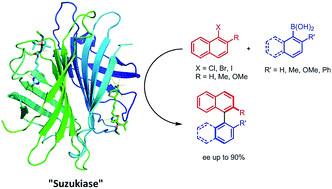
Chem. Sci., 2016,7, 673-677
https://doi.org/10.1039/C5SC03116H
Rational synthesis of normal, abnormal and anionic NHC–gallium alkyl complexes: structural, stability and isomerization insights
Using two alternative methodologies, new light has been shed on the stability and rational formation of abnormal NHC–gallium complexes.

Chem. Sci., 2015,6, 5719-5728
https://doi.org/10.1039/C5SC02086G
Addition of aluminium, zinc and magnesium hydrides to rhodium(III)
We report the addition of M–H bonds (M = Al, Zn, Mg) to a Rh(III) intermediate generated from the reductive elimination of triethylsilane from [Cp*Rh(H)2(SiEt3)2].
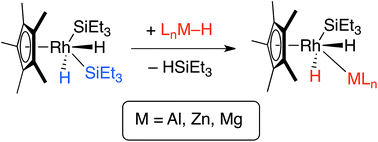
Chem. Sci., 2015,6, 5617-5622
https://doi.org/10.1039/C5SC01309G
Remote functionalization of hydrocarbons with reversibility enhanced stereocontrol
Remote functionalization of hydrocarbons could be achieved through successive zirconocene-mediated allylic C–H bond activations followed by a selective C–C bond cleavage.
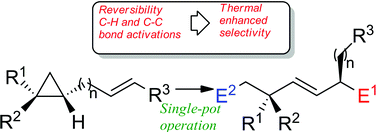
Chem. Sci., 2015,6, 2770-2776
https://doi.org/10.1039/C5SC00445D
Rh(III)-catalyzed C–H olefination of N-pentafluoroaryl benzamides using air as the sole oxidant
Rhodium(III)-catalyzed C–H olefination reaction using air as the sole oxidant.

Chem. Sci., 2015,6, 1923-1927
https://doi.org/10.1039/C4SC03350G
Direct catalytic cross-coupling of alkenyllithium compounds
The direct cross-coupling of alkenyllithium reagents with aryl and alkenyl halides is described. The use of a catalyst comprising Pd2(dba)3/XPhos allows for the stereoselective preparation of a wide variety of substituted alkenes in high yields under mild conditions.

Chem. Sci., 2015,6, 1394-1398
https://doi.org/10.1039/C4SC03117B
Selecting reactions and reactants using a switchable rotaxane organocatalyst with two different active sites
The activation mode of a rotaxane-based organocatalyst with both secondary amine and squaramide catalytic units can be switched with acid or base, affording different products from a mixture of three building blocks.
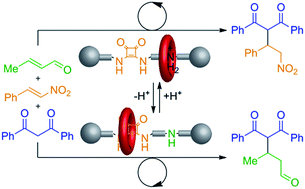
Chem. Sci., 2015,6, 140-143
https://doi.org/10.1039/C4SC03279A
Synthesis, structure, and reactivity of crystalline molecular complexes of the {[C5H3(SiMe3)2]3Th}1− anion containing thorium in the formal +2 oxidation state
Structural, spectroscopic, and DFT analysis of the first molecular complexes of Th2+ indicate they have a 6d2 electron configuration of the type expected for the transactinide ions Rf2+ and Db3+.
![Graphical abstract: Synthesis, structure, and reactivity of crystalline molecular complexes of the {[C5H3(SiMe3)2]3Th}1− anion containing thorium in the formal +2 oxidation state](/en/Image/Get?imageInfo.ImageType=GA&imageInfo.ImageIdentifier.ManuscriptID=C4SC03033H&imageInfo.ImageIdentifier.Year=2015)
Chem. Sci., 2015,6, 517-521
https://doi.org/10.1039/C4SC03033H
DNA based multi-copper ions assembly using combined pyrazole and salen ligandosides
The pyrazole and salen ligandosides, when combined, are able to create stable multi-copper ion complexing DNA duplex structures in a cooperative fashion.
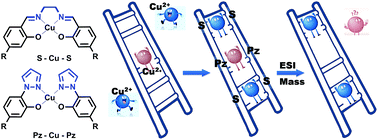
Chem. Sci., 2015,6, 632-638
https://doi.org/10.1039/C4SC01567C
Synthesis and energetics of Tp′Rh[P(OMe)3](R)H: a systematic investigation of ligand effects on C–H activation at rhodium
The [Tp′Rh(P(OMe)3)] fragment is investigated for C–H bond activation and bond strength information is compared with that for [Tp′Rh(PMe3)] and [Tp′Rh(CNneopentyl)] fragments, showing bond energy correlations that follow the order CNneopentyl < P(OMe)3 < PMe3.
H: a systematic investigation of ligand effects on C–H activation at rhodium](/en/Image/Get?imageInfo.ImageType=GA&imageInfo.ImageIdentifier.ManuscriptID=C3SC52748D&imageInfo.ImageIdentifier.Year=2014)
Chem. Sci., 2014,5, 804-812
https://doi.org/10.1039/C3SC52748D
Enzymatic activation of nitro-aryl fluorogens in live bacterial cells for enzymatic turnover-activated localization microscopy
We report a nitro-aryl fluorogen capable of being enzymatically converted into a bright fluorophore suitable for single-molecule imaging in cells.
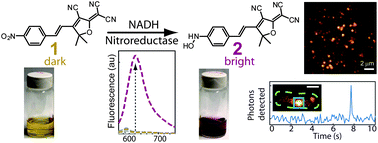
Chem. Sci., 2013,4, 220-225
https://doi.org/10.1039/C2SC21074F
Effects of halogens on European air-quality
Faraday Discuss., 2017,200, 75-100
https://doi.org/10.1039/C7FD00026J
Base-catalysed, one-step mechanochemical conversion of chitin and shrimp shells into low molecular weight chitosan
A facile, solid-state mechanochemical method was developed for the synthesis of low molecular weight chitosan (LMWC) in one step from chitin and crude shrimp shell powders, in which chitin undergoes simultaneous deacetylation and depolymerisation in the presence of a base catalyst under mechanical milling.
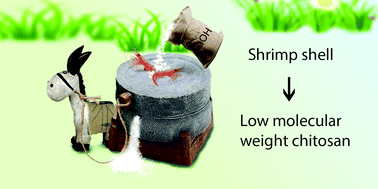
Green Chem., 2017,19, 2783-2792
https://doi.org/10.1039/C7GC00089H
pH dependent photocatalytic hydrogen evolution by self-assembled perylene bisimides
We show the importance of the self-assembly of a perylene bisimide on its photocatalytic activity.

J. Mater. Chem. A, 2017,5, 7555-7563
https://doi.org/10.1039/C7TA01845B
Probing the surface chemistry of self-assembled peptide hydrogels using solution-state NMR spectroscopy
By studying interactions of a range of probes, we can simultaneously study the surface chemical properties of NMR-invisible gel fibres.
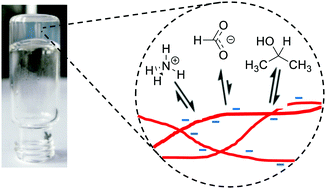
Soft Matter, 2017,13, 1716-1727
https://doi.org/10.1039/C6SM02404A
OH production from the photolysis of isoprene-derived peroxy radicals: cross-sections, quantum yields and atmospheric implications
The OH radical production from the near-ultraviolet photolysis of peroxy radicals derived from isoprene has been investigated.
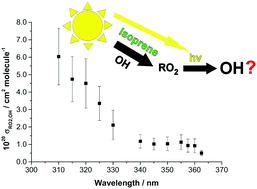
Phys. Chem. Chem. Phys., 2017,19, 2332-2345
https://doi.org/10.1039/C6CP06718B
Na2CoSiO4 as a cathode material for sodium-ion batteries: structure, electrochemistry and diffusion pathways
A novel cobalt orthosilicate, Na2CoSiO4, shows promise as a high voltage (3.3 V vs. Na/Na+) cathode material for sodium-ion batteries.

Phys. Chem. Chem. Phys., 2016,18, 32744-32752
https://doi.org/10.1039/C6CP06777H
Drug delivery and controlled release from biocompatible metal–organic frameworks using mechanical amorphization
We have used a family of Zr-based metal–organic frameworks (MOFs) with different functionalized (bromo, nitro and amino) and extended linkers for drug delivery.
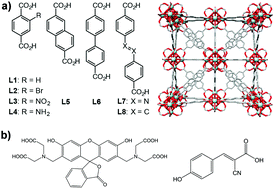
J. Mater. Chem. B, 2016,4, 7697-7707
https://doi.org/10.1039/C6TB02025A
Columnar shifts as symmetry-breaking degrees of freedom in molecular perovskites
Columnar shifts are degrees of freedom in molecular perovskites of relevance to phase transitions, improper ferroelectricity, and negative thermal expansion.
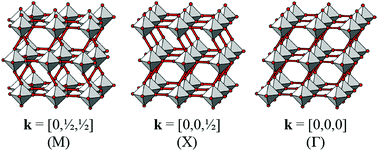
Phys. Chem. Chem. Phys., 2016,18, 31881-31894
https://doi.org/10.1039/C6CP05730F
DROPLAY: laser writing of functional patterns within biological microdroplet displays
In this study, we introduce an optofluidic method for the rapid construction of large-area cell-sized droplet assemblies with user-defined re-writable two-dimensional patterns of functional droplets.
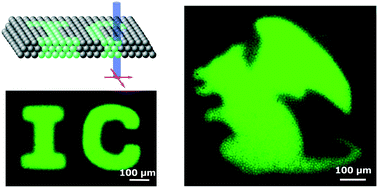
Lab Chip, 2016,16, 4621-4627
https://doi.org/10.1039/C6LC01219A
About this collection
In celebration of the 2017 Royal Society of Chemistry Prizes and Awards, we have collected together some of the exciting research recently published by the winners. This collection showcases articles authored by the winners from across the Royal Society of Chemistry’s journals portfolio – these articles are free to access until 1st August 2017. A full list of winners and more information about Royal Society of Chemistry Prizes and Awards can be found at: rsc.li/awards-prizes-2017
Why not also have a look at last year’s collection of articles by our 2016 winners – http://rsc.li/rscwinners2016-collection